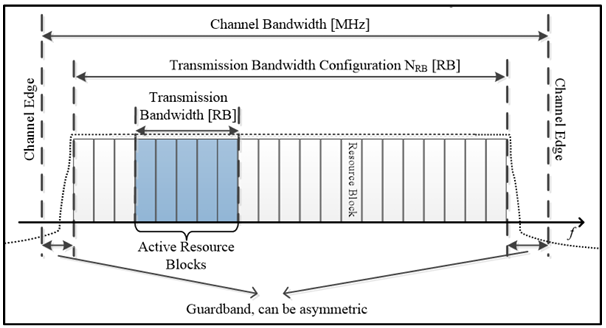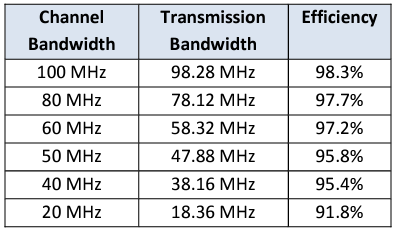5G standards define the use of wide radio channels. Whereas 4G LTE is limited to a maximum radio channel size of 20 MHz, 5G standards specify the use of radio channels up to 100 MHz in frequency bands below 7 GHz and up to 400 MHz in mmWave radio channels at 24 GHz and higher. Beyond these wide channels, 5G can aggregate radio channels for a total bandwidth of 800 MHz.

With a 100 MHz radio channel, an operator can deliver peak throughput rates of 1 Gbps and average throughput rates of 100s of Mbps. Large bandwidths of 80–100 MHz contiguous spectrum are considered by the industry as important to deliver high throughput 5G services in the 3400–3800 MHz frequency band.
The Efficiency of 5G Channel Bandwidth
Given a certain amount of overhead in using any radio channel, including guard bands as shown in the above figure, the wider the radio channel, the smaller the percentage of radio resource that the overhead consumes. Thus, wider channels are spectrally more efficient. Due to the guard band overhead, The below table shows how a 5G 100 MHz radio channel uses 98.3% of the radio resource whereas a 20 MHz radio uses only 91.8%.
The same increased utilization of the radio resource is true in 4G LTE, in which a 20 MHz radio channel is more efficient than lower bandwidths.

References:
- 3GPP TS 38.104
- CTIA
